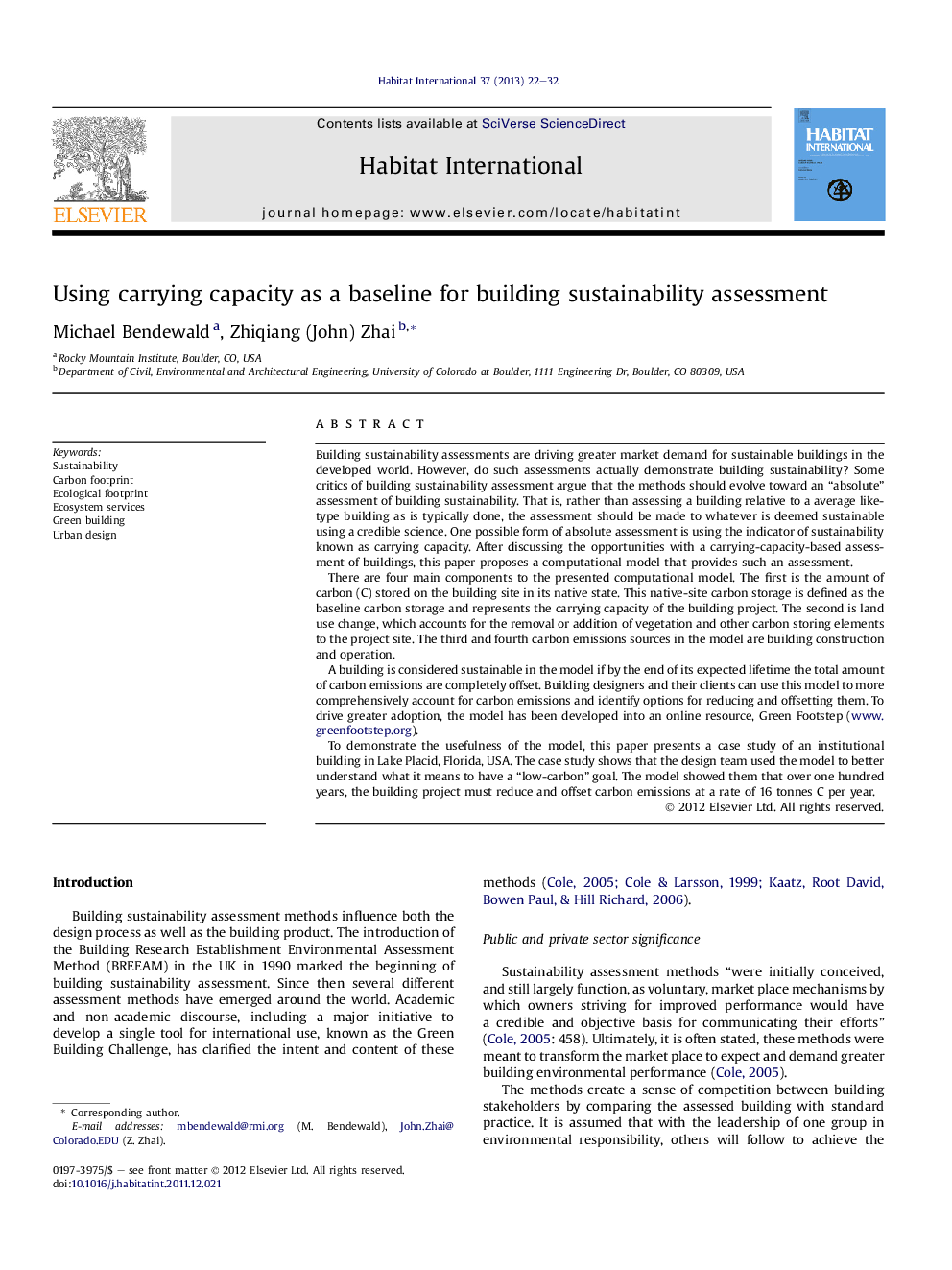| کد مقاله | کد نشریه | سال انتشار | مقاله انگلیسی | نسخه تمام متن |
|---|---|---|---|---|
| 1048345 | 1484505 | 2013 | 11 صفحه PDF | دانلود رایگان |

Building sustainability assessments are driving greater market demand for sustainable buildings in the developed world. However, do such assessments actually demonstrate building sustainability? Some critics of building sustainability assessment argue that the methods should evolve toward an “absolute” assessment of building sustainability. That is, rather than assessing a building relative to a average like-type building as is typically done, the assessment should be made to whatever is deemed sustainable using a credible science. One possible form of absolute assessment is using the indicator of sustainability known as carrying capacity. After discussing the opportunities with a carrying-capacity-based assessment of buildings, this paper proposes a computational model that provides such an assessment.There are four main components to the presented computational model. The first is the amount of carbon (C) stored on the building site in its native state. This native-site carbon storage is defined as the baseline carbon storage and represents the carrying capacity of the building project. The second is land use change, which accounts for the removal or addition of vegetation and other carbon storing elements to the project site. The third and fourth carbon emissions sources in the model are building construction and operation.A building is considered sustainable in the model if by the end of its expected lifetime the total amount of carbon emissions are completely offset. Building designers and their clients can use this model to more comprehensively account for carbon emissions and identify options for reducing and offsetting them. To drive greater adoption, the model has been developed into an online resource, Green Footstep (www.greenfootstep.org).To demonstrate the usefulness of the model, this paper presents a case study of an institutional building in Lake Placid, Florida, USA. The case study shows that the design team used the model to better understand what it means to have a “low-carbon” goal. The model showed them that over one hundred years, the building project must reduce and offset carbon emissions at a rate of 16 tonnes C per year.
► Building sustainability assessments drive greater market demand for sustainable buildings in the developed world.
► The paper questions the assumption that such assessments actually demonstrate building sustainability.
► It proposes an assessment that is made with regard to an “absolute” measure of sustainability.
► The paper presents a case study of using the assessment to inform the design of a new building in Florida, USA.
Journal: Habitat International - Volume 37, January 2013, Pages 22–32